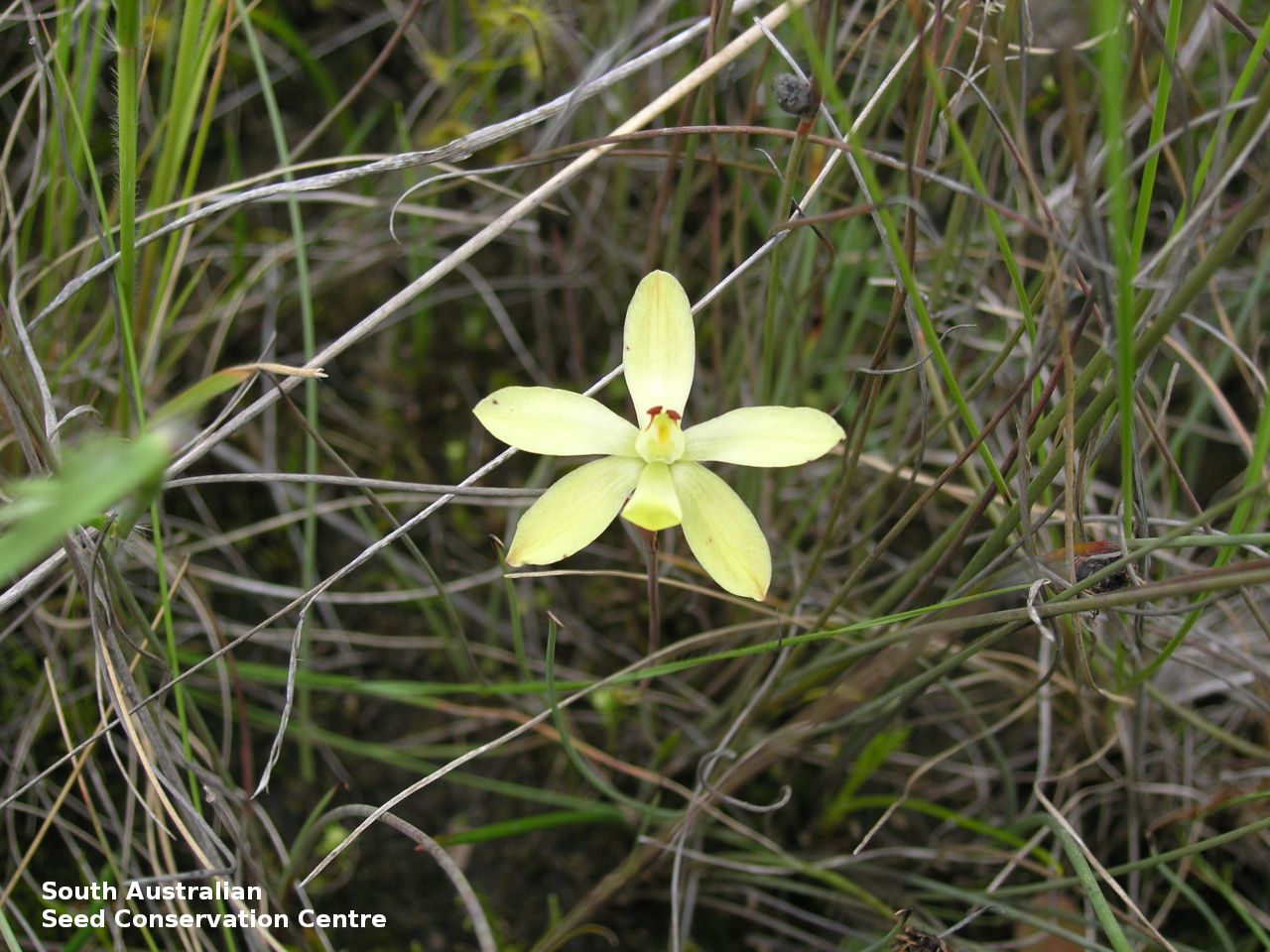
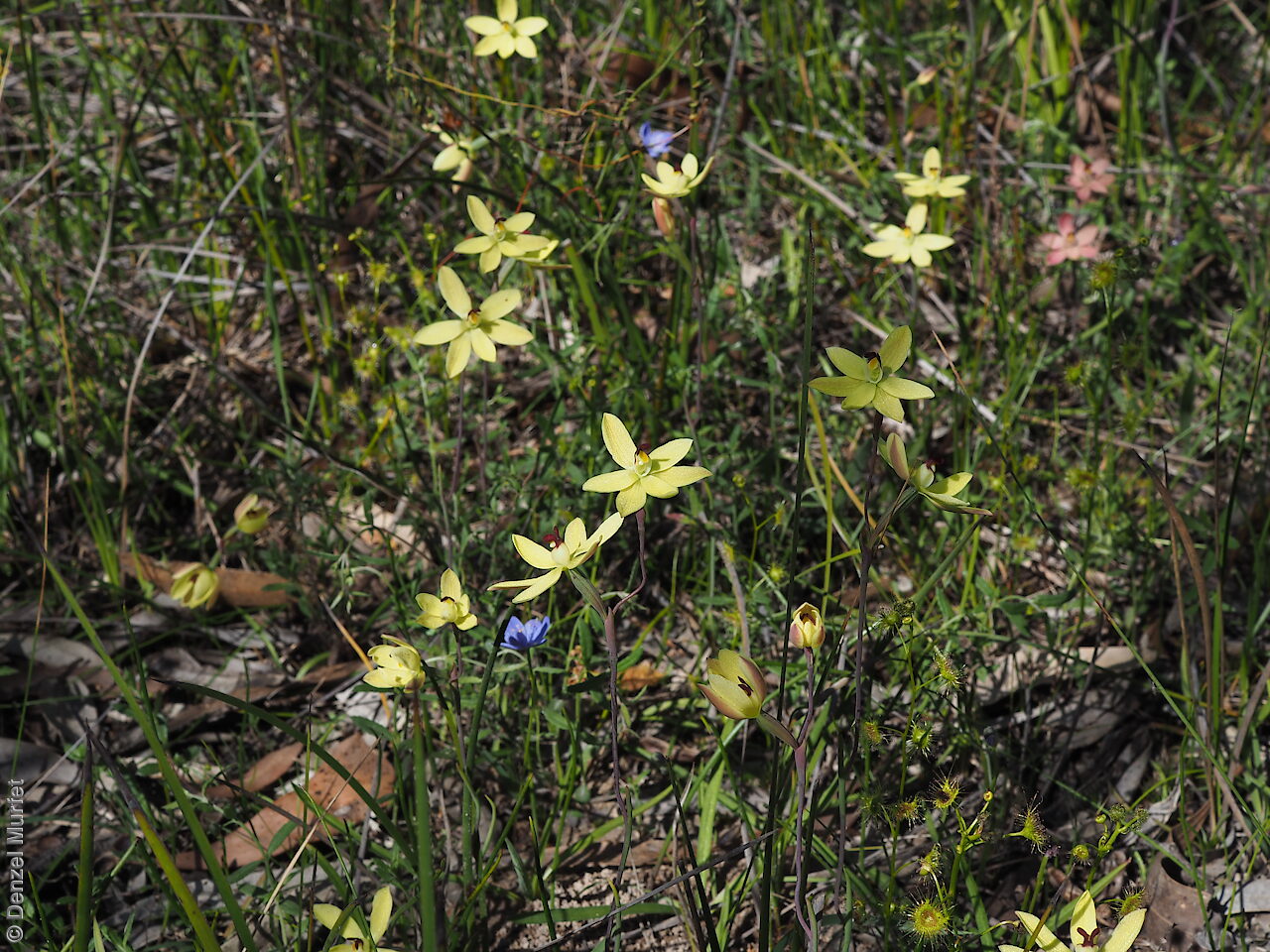
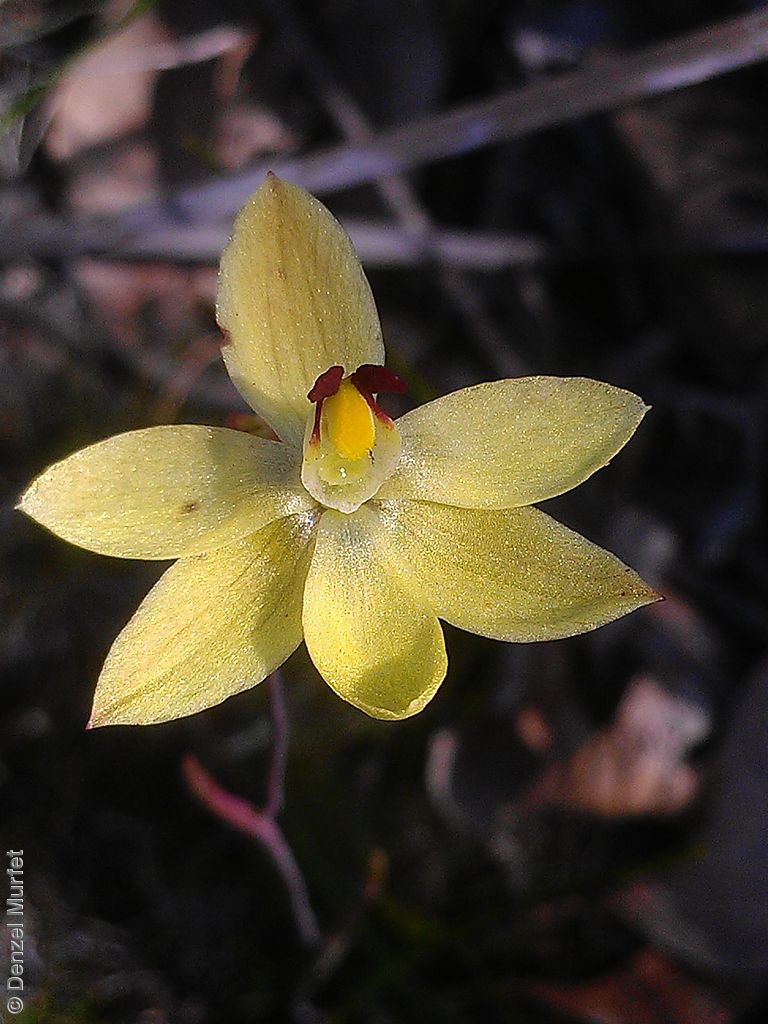
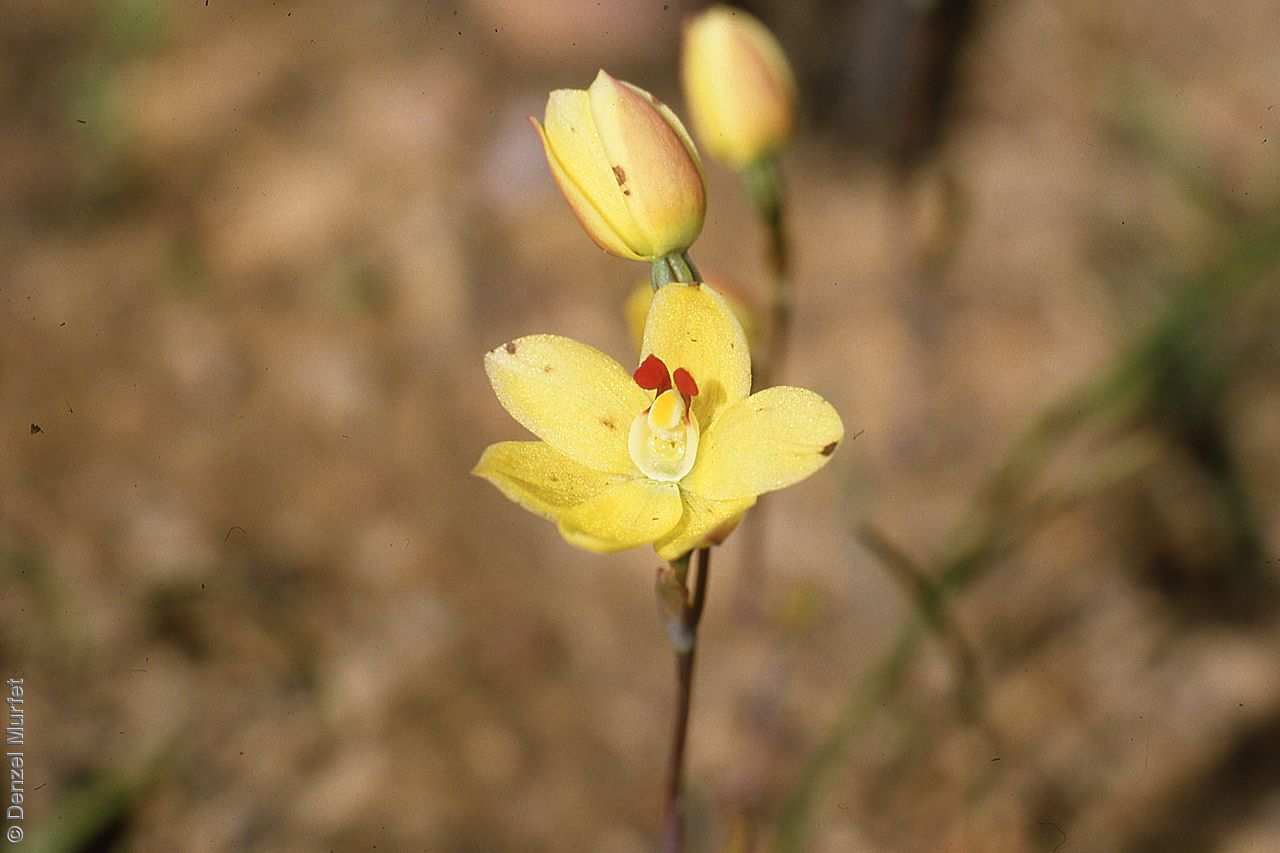
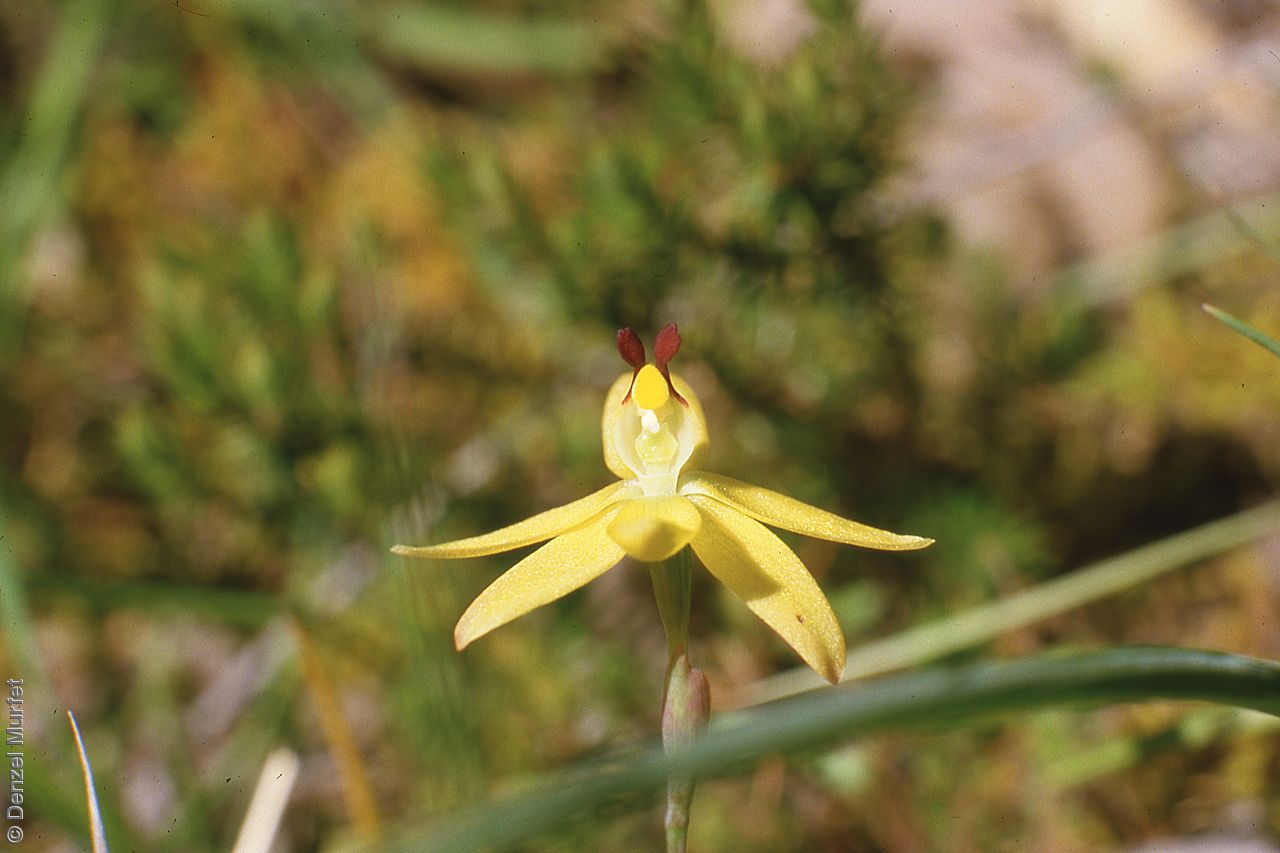
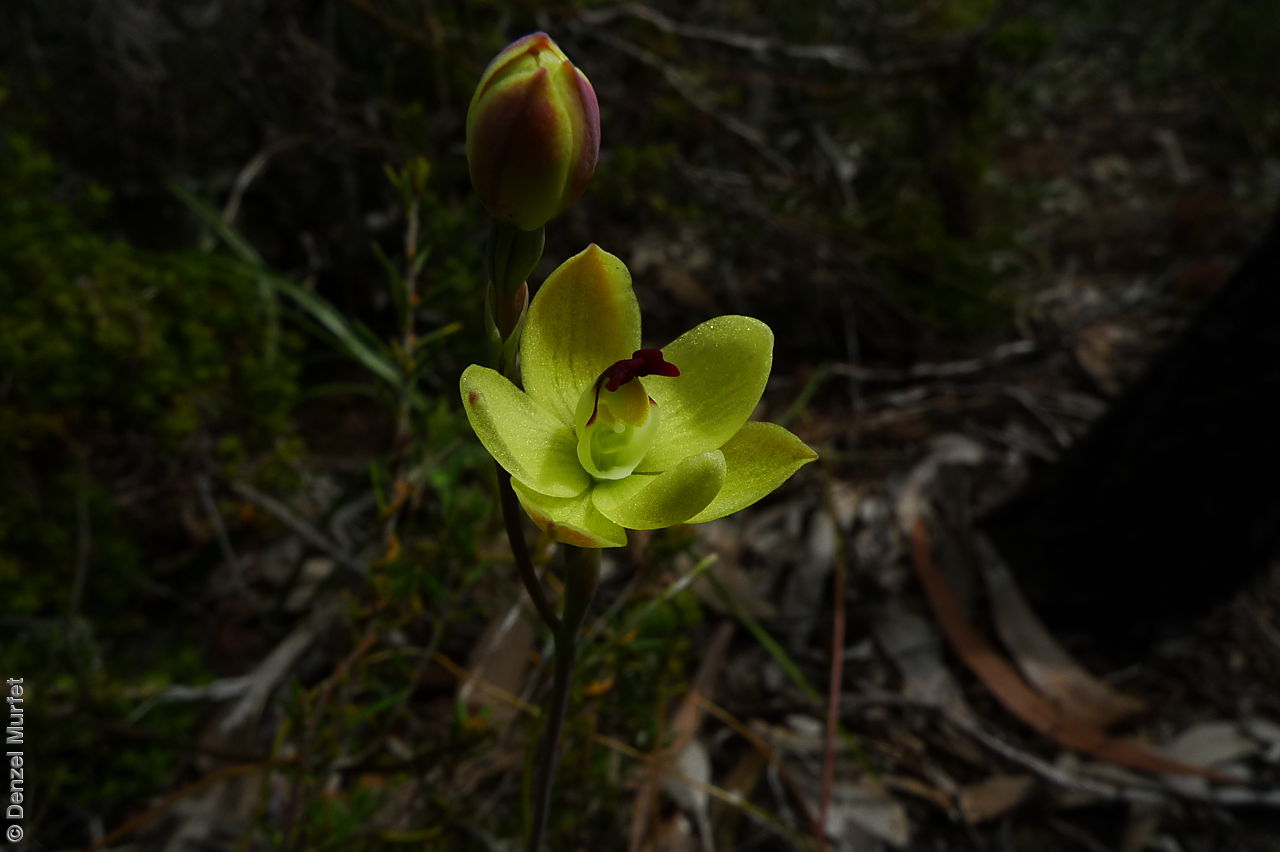
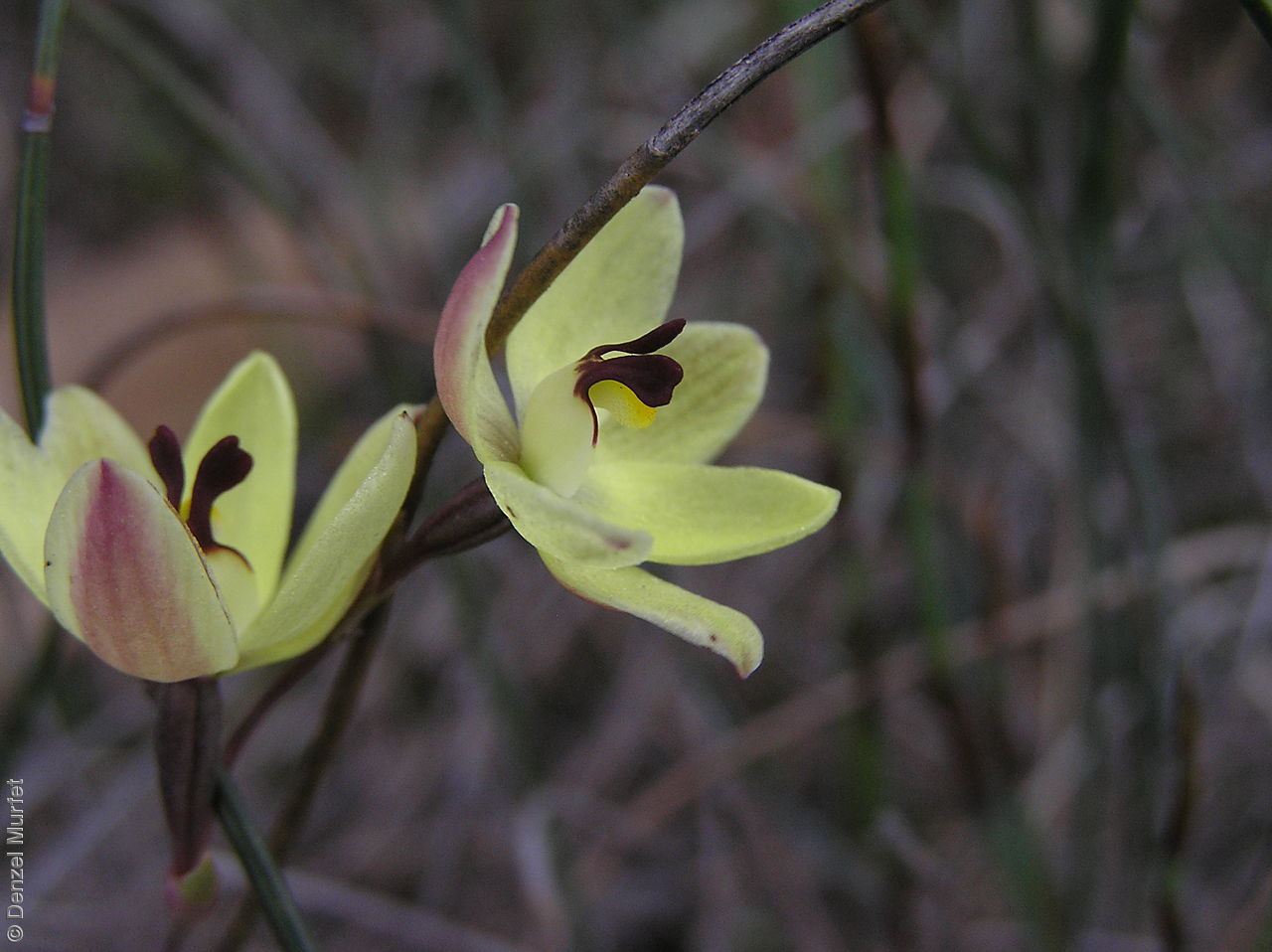

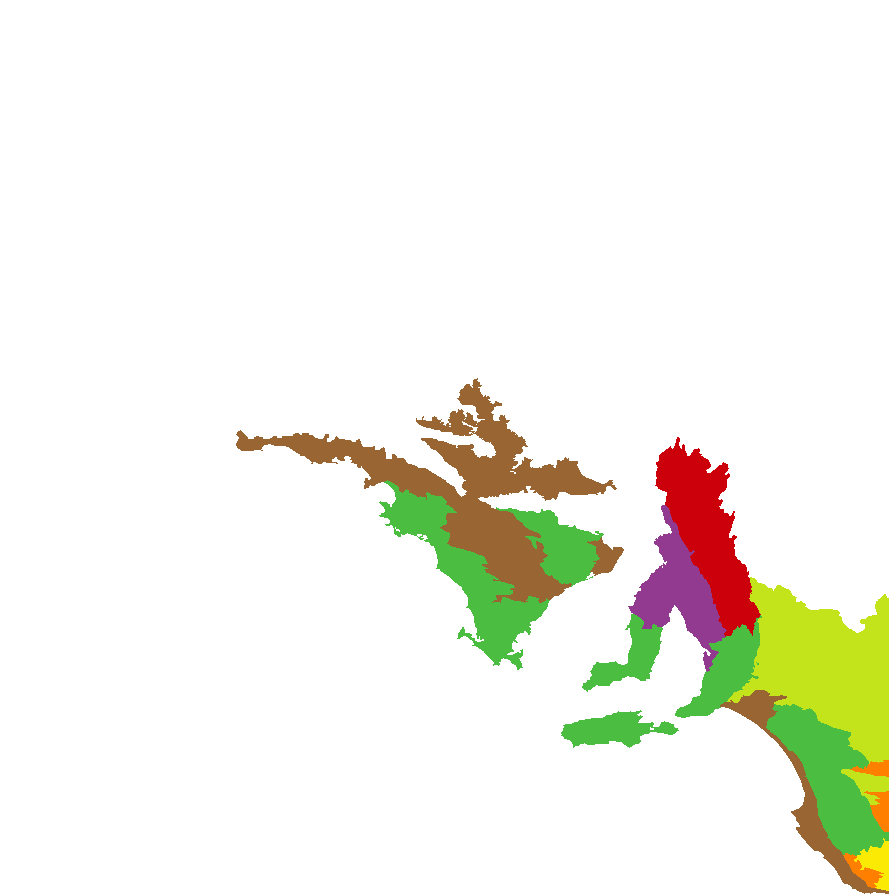
Botanical art
Prior names
Macdonaldia antennifera
Common names
Rabbit-ears
Lemon Sun-orchid
Etymology
Thelymitra from Greek 'thelys' meaning a bishop and 'mitra' meaning a headwear, hat, hence a bishop’s mitre; referring to the sometimes plumed or decorated wings of the column, which is usually produced behind and over the anther in a hood-like projection. Antennifera meaning with antennae; referring to the erect column arms which resemble antennae or ears.
Distribution and status
Found in the southern part of South Australia from the west coast, across Eyre Peninsula and inland to the Gawler Ranges, the Southern Flinders, through Yorke Peninsula, the Mount Lofty Ranges, the southern Murray-lands, Kangaroo Island and the South-east. Grows In a variety of soil types from sands to clays, from swamp margins, in seepage areas in woodland, heath, mallee-heath and grasslands. Also found in Western Australia, Victoria and Tasmania. Native. Common in South Australia. Common in the other states.
Herbarium regions: Flinders Ranges, Eyre Peninsula, Northern Lofty, Murray, Yorke Peninsula, Southern Lofty, Kangaroo Island, South Eastern, Green Adelaide
NRM regions: Adelaide and Mount Lofty Ranges, Eyre Peninsula, Kangaroo Island, Northern and Yorke, South Australian Murray-Darling Basin, South East
AVH map: SA distribution map (external link)
Plant description
Leaf, filiform, terete, erect, to 10 cm long with red striped at the base. Flower stem to 20 cm tall, wiry and zig zag; with sheathing stem bracts at the point of flexion. The flowers 1-4, widely and freely opening, about 30 mm across, bright yellow with dark brown column arms. Column about 5 mm high, with two erect, minutely papillose, somewhat two-lobed, spathulate appendages more than 3 mm long, resembling rabbit ears. The flowers are faintly but sweetly scented. Flowering between August and November. Fruits are brown papery ellipsoid capsule.
Seed collection and propagation
Collect seeds between January and February. Collect fat capsules as they start to dry and turn brown. Pods will split and release the seeds quickly and will require monitoring. To increase the chances of collecting mature pods, it is recommended that a small breathable bag (ie. Organza bags) be used to enclose the developing capsules. Place the capsules in a container that will hold fine seeds and leave to dry for a few weeks or until the capsule split. Then carefully hold the capsule and tap it gently to release the seeds. Store the seeds with a desiccant such as dried silica beads or dry rice, in an air tight container in a cool and dry place or in liquid nitrogen.